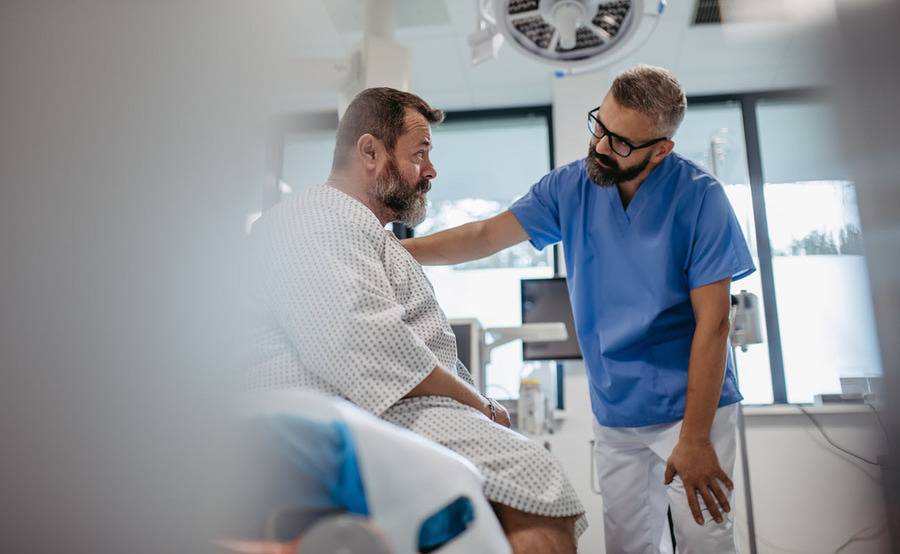Interventional Pulmonology
Minimally invasive care for chest and lung diseases

Minimally invasive care for chest and lung diseases
If you have a medical condition that impacts your ability to breathe, then you know how important it is to receive care from doctors who specialize in respiratory disorders.
Whether you need further evaluation of a lung mass or ongoing care for pleural effusion, Scripps can help. As one of the few health systems in the western United States to offer interventional pulmonology services, our doctors diagnose and treat lung cancer, complex airway disorders and pleural diseases using highly specialized, minimally invasive techniques.
What is interventional pulmonology?
Numerous medical conditions can affect your respiratory system, resulting in symptoms such as shortness of breath, wheezing, chest pain or chronic cough. Doctors who treat these conditions are called pulmonary medicine specialists, or pulmonologists.
Throughout the last decade, a small but growing segment of physicians have emerged within the field of pulmonary medicine.
Known as interventional pulmonology, this branch of medicine has produced important new techniques that allow doctors to diagnose and treat chest and lung diseases less invasively — often reducing the number of procedures needed and their associated risk of complications.
Interventional pulmonology services offered at Scripps
Scripps is proud to be among a distinguished few medical centers that offer interventional pulmonology services.
Because the techniques our doctors use are less invasive than many traditional procedures used to diagnose or treat chest and lung disorders, they have helped transform pulmonary care by making it easier, faster and often safer to access the lungs and other hard-to-reach parts of the respiratory system.
Collectively, the procedures we offer allow us to:
- Biopsy, diagnose and stage lung cancer all in one procedure.
- Diagnose and treat complex medical conditions that cause narrowed or blocked airways.
- Diagnose and treat pleural diseases, which are conditions that affect the space around the lungs (sometimes referred to as the pleural cavity).
- Provide palliative therapies that help relieve pain, reduce symptoms and improve quality of life through the duration of an illness.
- Obtain tissue samples that allow doctors and researchers to genetically profile tumors, a vital step in creating targeted new therapies for lung cancer.
Expert care from top San Diego clinicians
Scripps clinicians have the training and experience necessary to diagnose, stage or treat even the most difficult or rare chest and lung disorders. Our interventional pulmonologists are board-certified in pulmonary disease and critical care medicine, with additional advanced training in interventional pulmonology. Other team members include specially trained nurses and respiratory therapists who also have extensive, hands-on experience providing interventional pulmonology care.
Given the complexity of many respiratory diseases, our doctors routinely collaborate with Scripps specialists in other fields to help ensure our patients have access to the most comprehensive care available. For example, we work closely with physicians in primary care, pulmonology, thoracic surgery, oncology and radiation therapy.
Perhaps most importantly, our team has earned a reputation for providing care that is warm and comforting. We understand that respiratory symptoms are often alarming, and undergoing a biopsy or waiting for test results can induce fear and anxiety.
That’s why we guide every patient through the testing and treatment process with compassion and open communication, so you and your loved ones feel informed and reassured every step of the way.